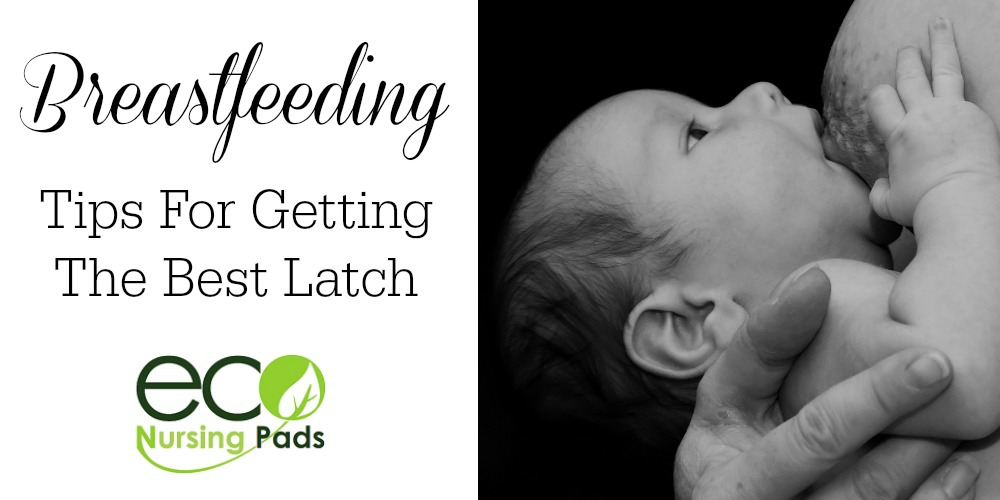Getting A Good Latch

From the very moment you baby is born, you work on breastfeeding latch. Learning to latch during breastfeeding happens for both you and your baby and getting a good latch is important. Breastfeeding latch occurs when your baby takes your nipple into his mouth to have a meal. Breast milk may begin flowing before or after baby begins to nurse and trigger let down. There are many factors that impact latch including the position of baby’s mouth in relation to your nipple, the position of baby’s body and physical features of baby’s mouth and your breast. Here are some tips for getting the best latch! Post contains affiliate links.

All of my children were born in the hospital. Immediately after they were born, excluding my c-section, I put them to my breast. There was always an overly excited nurse trying to help with our latch. The last one was pushing his head from behind nearly yelling “make sure he gets a deep latch.” I thought, lady, you have no idea! I explained that we had this, and sent her off. Later on, we used the breastfeeding pillow I received as a baby shower gift and got comfortable or our newborn nursing marathons.
Latch related nipple soreness
When your baby is first born, their mouth is smaller than it is at 3 months. Remember, your baby is opening his mouth outside of the womb for the first time and experiencing the world as a newbie. For each of my children, I found that the first few weeks had a bit of soreness. Using some natural nipple balm and changing position helped. If the latch is painful, you can always unlatch and relatch with a better position.
I often heard “make sure your baby takes your whole areola in” for breastfeeding. Now, this depends on the size of your areola (not the pointy nipple part) and the size of baby’s mouth. What is true is that baby should have a big mouthful, maybe an inch. Taking in an appropriate amount of areola can mean the difference between a comfy and a painful latch. Baby should absolutely have more than your nipple (pointy) portion in his mouth when breastfeeding.
Providing good head support for breastfeeding latch
Breastfeeding a newborn baby can be a bit trickier. Unlike an older baby who can support and move his own head, you need to support baby’s head. Baby should lean-in chin-first with an open mouth and in-line with your nipple or just below. Lips should be out and not tucked inside of baby’s mouth and you should hear swallowing as your baby eats. Getting into a comfortable position is helpful, especially in the first few weeks when your newborn baby nurses (what feels like) constantly and you are recovering from delivery.
(Pin image below)

A good nursing pillow can help latch
A good nursing pillow can really help with getting a good latch by putting your baby in alignment with your breast. Baby should be stright-on or slightly below your nipple before latching. Nursing pillows come in different sizes and thicknesses. Before your baby is born, test out pillows on your lap and make sure to get one that reaches your nipple with baby on top. Having a pillow that’s too low, or one that’s too high makes it fairly useless. I found that I needed two boppy pillows stacked together but the Bliss pillow was just right.
Cracked or damaged nipples
Using a natural nipple cream can help with cracked or sore nipples even if you’re getting a good latch. It’s important to continue to nurse through conditions including mastitis and blocked ducts to empty the breast. Using washable breast pads can help with nipple cream and can pad your nursing bra for comfort. If your crack is more than something that resolves quickly, contact your local lactation consultant or OB for advice. .
If you’re using your free breast pump in addition to breastfeeding at the breast, avoiding using the shields and evaluating for proper fit may help. The natural nipple cream can also be used as a lubricant for pumping when applied in small amounts.
If your baby is nursing but not taking in milk, really damaging your nipple, he may need to be evaluated for a tongue or lip tie which can prevent the transfer of milk. In any case, a trip to the lactation consultant or your local La Leche League chapter can help put your mind at ease. Remember, that the majority of Moms fear that their baby is not getting enough milk but hearing everything is OK from a professional is certainly reassuring.
- http://www.llli.org/faq/positioning.html
- http://www.llli.org/docs/78.pdf
